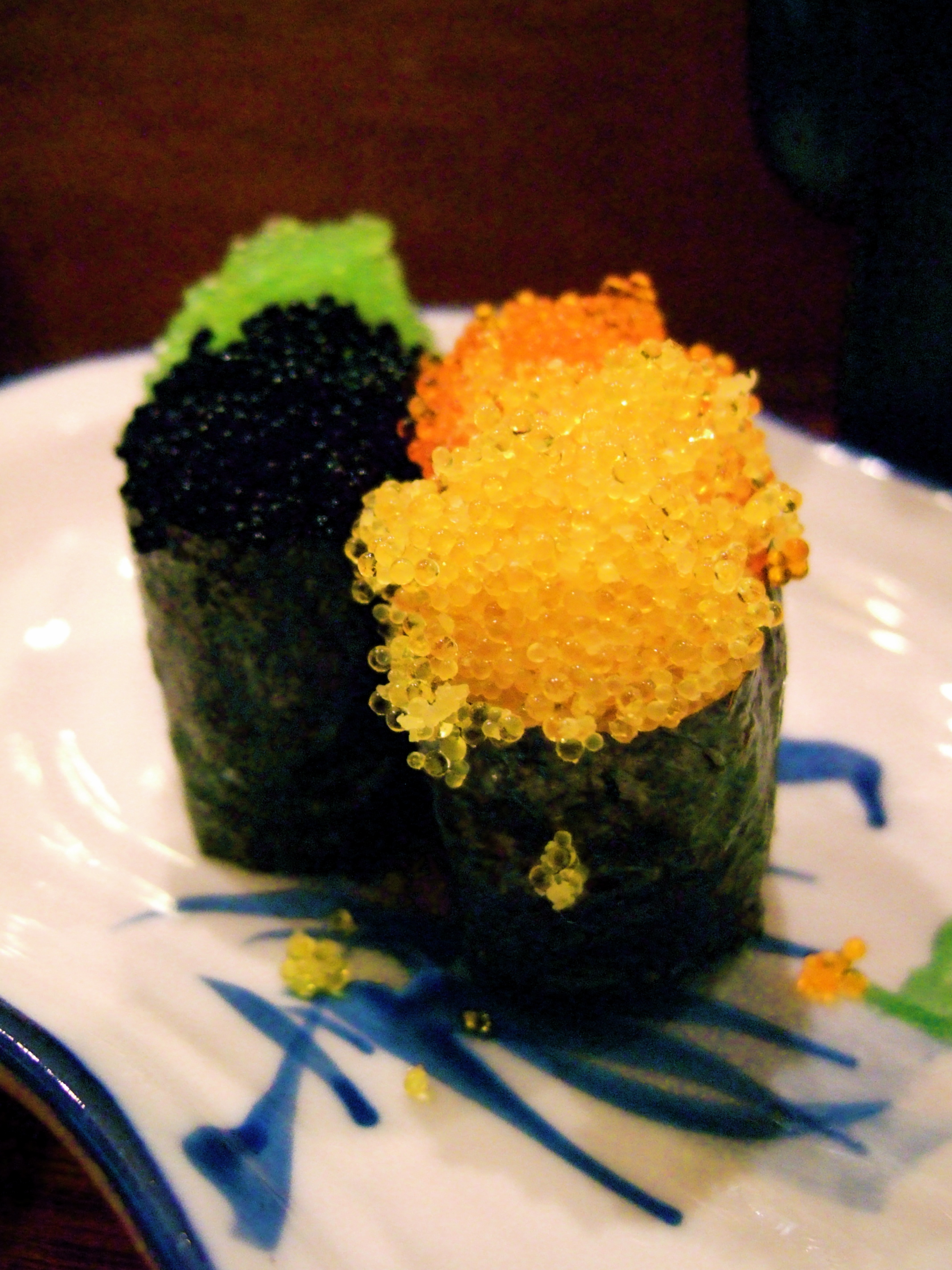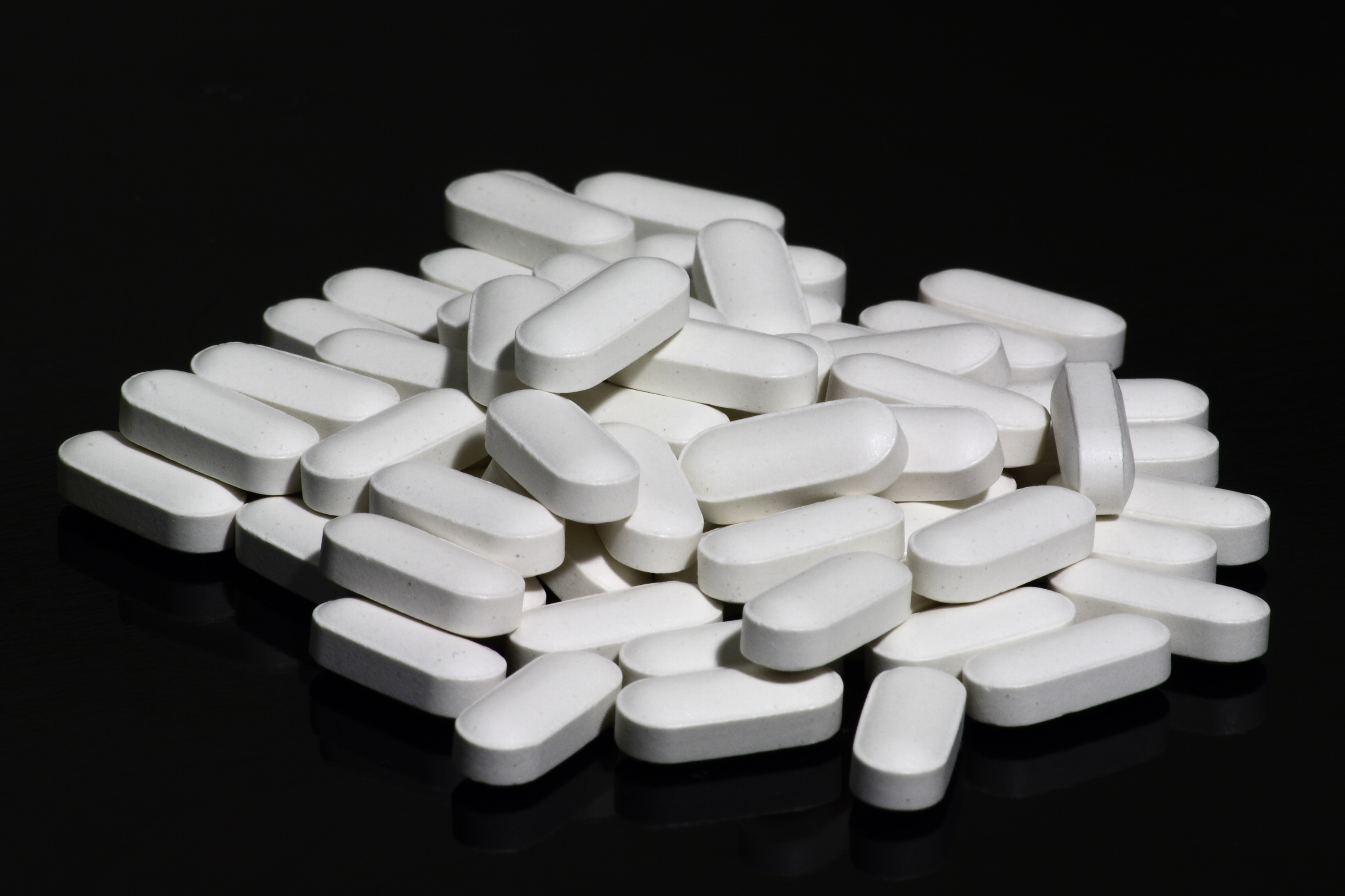|
Tobiko
is flying fish roe in Japanese cuisine, known for its use in ''sushi''. Description The eggs are small, ranging from 0.5 to 0.8 mm. For comparison, ''tobiko'' is larger than '' masago'' ( capelin roe), but smaller than '' ikura'' (salmon roe). Natural ''tobiko'' has a red-orange color, a mild smoky or salty taste, and a crunchy texture. ''Tobiko'' is sometimes colored to change its appearance: other natural ingredients are used to accomplish the change, such as squid ink to make it black, ''yuzu'' to make it pale orange (almost yellow), or even ''wasabi'' to make it green and spicy. A serving of ''tobiko'' can contain several pieces, each having a different color. When prepared as ''sashimi'', it may be presented on avocado halves or wedges. ''Tobiko'' is used in the creation of many other Japanese dishes. Often, it is used as an ingredient in California rolls. Frequently, ''masago'' (capelin or smelt roe) is substituted for ''tobiko'', due to its similar appearance an ... [...More Info...] [...Related Items...] OR: [Wikipedia] [Google] [Baidu] |
Masago
Roe, ( ) or hard roe, is the fully ripe internal egg masses in the ovaries, or the released external egg masses, of fish and certain marine animals such as shrimp, scallop, sea urchins and squid. As a seafood, roe is used both as a cooking, cooked ingredient in many dishes, and as a raw ingredient for delicacies such as caviar. The roe of marine animals, such as the roe of Cyclopterus lumpus, lumpsucker, hake, Mullet (fish), mullet, salmon, Atlantic bonito, mackerel, squid, and cuttlefish are especially rich sources of omega-3 fatty acids, but omega-3s are present in all fish roe. Also, a significant amount of Vitamin B12, vitamin B12 is among the nutrients present in fish roes. Roe from a sturgeon or sometimes other fish such as flathead grey mullet, is the raw base product from which caviar is made. The term soft roe or white roe denotes fish milt, not fish eggs. By country Africa South Africa People in KwaZulu-Natal consume fish roe in the form of slightly sour curry o ... [...More Info...] [...Related Items...] OR: [Wikipedia] [Google] [Baidu] |
Capelin
The capelin or caplin (''Mallotus villosus'') is a small forage fish of the smelt family found in the North Atlantic, North Pacific and Arctic oceans. In summer, it grazes on dense swarms of plankton at the edge of the ice shelf. Larger capelin also eat a great deal of krill and other crustaceans. Among others, whales, seals, Atlantic cod, Atlantic mackerel, squid and seabirds prey on capelin, in particular during the spawning season while the capelin migrate south. Capelin spawn on sand and gravel bottoms or sandy beaches at the age of two to six years. When spawning on beaches, capelin have an extremely high post-spawning mortality rate which, for males, is close to 100%. Males reach in length, while females are up to long. They are olive-coloured dorsally, shading to silver on sides. Males have a translucent ridge on both sides of their bodies. The ventral aspects of the males iridesce reddish at the time of spawn. The closest relative of the capelin appears to have be ... [...More Info...] [...Related Items...] OR: [Wikipedia] [Google] [Baidu] |
:Category:Japanese Words And Phrases ...
{{Commons Words and phrases by language Words Words Words A word is a basic element of language that carries meaning, can be used on its own, and is uninterruptible. Despite the fact that language speakers often have an intuitive grasp of what a word is, there is no consensus among linguists on its ... [...More Info...] [...Related Items...] OR: [Wikipedia] [Google] [Baidu] |
Sashimi
is a Japanese cuisine, Japanese delicacy consisting of fresh raw fish or Raw meat, meat sliced into thin pieces and often eaten with soy sauce. Origin The word ''sashimi'' means 'pierced body', i.e., "wikt:刺身, 刺身" = ''sashimi'', where wikt:刺, 刺 wikt:し, し = ''sashi'' (pierced, stuck) and wikt:身, 身 = ''mi'' (body, meat). This word dates from the Muromachi period (1336-1573) and there are multiple theories as to its etymology: The term was possibly coined when the word "wikt:切る, 切る" = ''kiru'' (cut), the culinary step, was considered too inauspicious to be used by anyone other than a samurai. This word may derive from the culinary practice of sticking the fish's tail and fin to the slices for the purpose of identifying the fish being eaten. Another possibility for the name is the traditional method of harvesting. "''Sashimi''-grade" fish is caught by individual handline. As soon as the fish is landed, its brain is pierced with a sharp spike, and it ... [...More Info...] [...Related Items...] OR: [Wikipedia] [Google] [Baidu] |
Omega-6 Fatty Acid
Omega−6 fatty acids (also referred to as ω−6 fatty acids or ''n''−6 fatty acids) are a family of polyunsaturated fatty acids (PUFA) that share a final carbon-carbon double bond in the ''n''−6 position, that is, the sixth bond, counting from the methyl end. Health and medical organizations recommend intake of omega-6 fatty acids as part of healthful dietary patterns. Health effects The American Heart Association "supports an omega-6 PUFA intake of at least 5% to 10% of energy in the context of other AHA lifestyle and dietary recommendations. To reduce omega-6 PUFA intakes from their current levels would be more likely to increase than to decrease risk for coronary heart disease." A 2018 review found that an increased intake of omega−6 fatty acids reduces total serum cholesterol and may reduce myocardial infarction (heart attack), but found no significant change in LDL cholesterol and triglycerides. A 2021 review found that omega−6 supplements do not affect the ... [...More Info...] [...Related Items...] OR: [Wikipedia] [Google] [Baidu] |
Omega-3 Fatty Acid
Omega−3 fatty acids, also called omega−3 oils, ω−3 fatty acids or ''n''−3 fatty acids, are polyunsaturated fatty acids (PUFAs) characterized by the presence of a double bond three atoms away from the terminal methyl group in their chemical structure. They are widely distributed in nature, are important constituents of animal lipid metabolism, and play an important role in the human diet and in human physiology. The three types of omega−3 fatty acids involved in human physiology are α-linolenic acid (ALA), eicosapentaenoic acid (EPA) and docosahexaenoic acid (DHA). ALA can be found in plants, while DHA and EPA are found in algae and fish. Marine algae and phytoplankton are primary sources of omega−3 fatty acids. DHA and EPA accumulate in fish that eat these algae. Common sources of plant oils containing ALA include walnuts, edible seeds, and flaxseeds as well as hempseed oil, while sources of EPA and DHA include fish and fish oils, and algae oil. Alm ... [...More Info...] [...Related Items...] OR: [Wikipedia] [Google] [Baidu] |
Protein
Proteins are large biomolecules and macromolecules that comprise one or more long chains of amino acid residue (biochemistry), residues. Proteins perform a vast array of functions within organisms, including Enzyme catalysis, catalysing metabolic reactions, DNA replication, Cell signaling, responding to stimuli, providing Cytoskeleton, structure to cells and Fibrous protein, organisms, and Intracellular transport, transporting molecules from one location to another. Proteins differ from one another primarily in their sequence of amino acids, which is dictated by the Nucleic acid sequence, nucleotide sequence of their genes, and which usually results in protein folding into a specific Protein structure, 3D structure that determines its activity. A linear chain of amino acid residues is called a polypeptide. A protein contains at least one long polypeptide. Short polypeptides, containing less than 20–30 residues, are rarely considered to be proteins and are commonly called pep ... [...More Info...] [...Related Items...] OR: [Wikipedia] [Google] [Baidu] |
Vitamin
Vitamins are Organic compound, organic molecules (or a set of closely related molecules called vitamer, vitamers) that are essential to an organism in small quantities for proper metabolism, metabolic function. Nutrient#Essential nutrients, Essential nutrients cannot be biosynthesis, synthesized in the organism in sufficient quantities for survival, and therefore must be obtained through the Diet (nutrition), diet. For example, vitamin C can be synthesized by some species but not by others; it is not considered a vitamin in the first instance but is in the second. Most vitamins are not single molecules, but groups of related molecules called vitamers. For example, there are eight vitamers of vitamin E: four tocopherols and four tocotrienols. The term ''vitamin'' does not include the three other groups of essential nutrients: mineral (nutrient), minerals, essential fatty acids, and essential amino acids. Major health organizations list thirteen vitamins: * Vitamin A (all-' ... [...More Info...] [...Related Items...] OR: [Wikipedia] [Google] [Baidu] |
Smelt (fish)
Smelts are a family of small fish, the Osmeridae, found in the North Atlantic and North Pacific oceans, as well as rivers, streams and lakes in Europe, North America and Northeast Asia. They are also known as freshwater smelts or typical smelts to distinguish them from the related Argentinidae (herring smelts or argentines), Bathylagidae (deep-sea smelts), and Retropinnidae (Australian and New Zealand smelts). Some smelt species are common in the North American Great Lakes, and in the lakes and seas of the northern part of Europe, where they run in large Shoaling and schooling, schools along the saltwater coastline during spring migration to their spawning streams. In some western parts of the United States, smelt populations have greatly declined in recent decades, leading to their protection under the Endangered Species Act. The Delta smelt (''Hypomesus transpacificus'') found in the Sacramento Delta of California, and the eulachon (''Thaleichthys pacificus'') found in the Nor ... [...More Info...] [...Related Items...] OR: [Wikipedia] [Google] [Baidu] |
California Roll
or California maki contains imitation crab (or rarely real crab), avocado, and cucumber. Sometimes crab salad is substituted for the crab stick. In America it comes as '' uramaki'' (inside-out ''makizushi'' roll) and often the outer layer of rice is sprinkled with toasted sesame seeds or roe (such as ''tobiko'' from flying fish). Outside America, California rolls may be closer to the traditional design or Futomaki, with nori seaweed on the outside. As one of the most popular styles of sushi in the United States and Canada, the California roll has been influential in sushi's global popularity, and in inspiring sushi chefs around the world to create non-traditional fusion cuisine. Ingredients The main wrapped ingredients are the avocado and imitation crab (surimi sticks); these are all typically wrapped with seaweed, although soy paper can be used. Premium versions may use real crab, as in the original recipe. The cucumber may have been used since the beginning, or added late ... [...More Info...] [...Related Items...] OR: [Wikipedia] [Google] [Baidu] |
Avocado
The avocado, alligator pear or avocado pear (''Persea americana'') is an evergreen tree in the laurel family (Lauraceae). It is native to Americas, the Americas and was first domesticated in Mesoamerica more than 5,000 years ago. It was prized for its large and unusually Avocado oil, oily fruit. The tree likely originated in the highlands bridging south-central Mexico and Guatemala. Avocado trees have a native growth range from Mexico to Costa Rica. Its fruit, sometimes also referred to as an alligator pear or avocado pear, is botanically a large Berry (botany), berry containing a single large seed. Sequencing of its genome showed that the evolution of avocados was shaped by polyploidy events and that commercial varieties have a Hybrid (biology), hybrid origin. Avocado trees are partly Self-pollination, self-pollinating, and are often Plant propagation, propagated through grafting to maintain consistent fruit output. Avocados are presently cultivated in the tropical and Medi ... [...More Info...] [...Related Items...] OR: [Wikipedia] [Google] [Baidu] |







